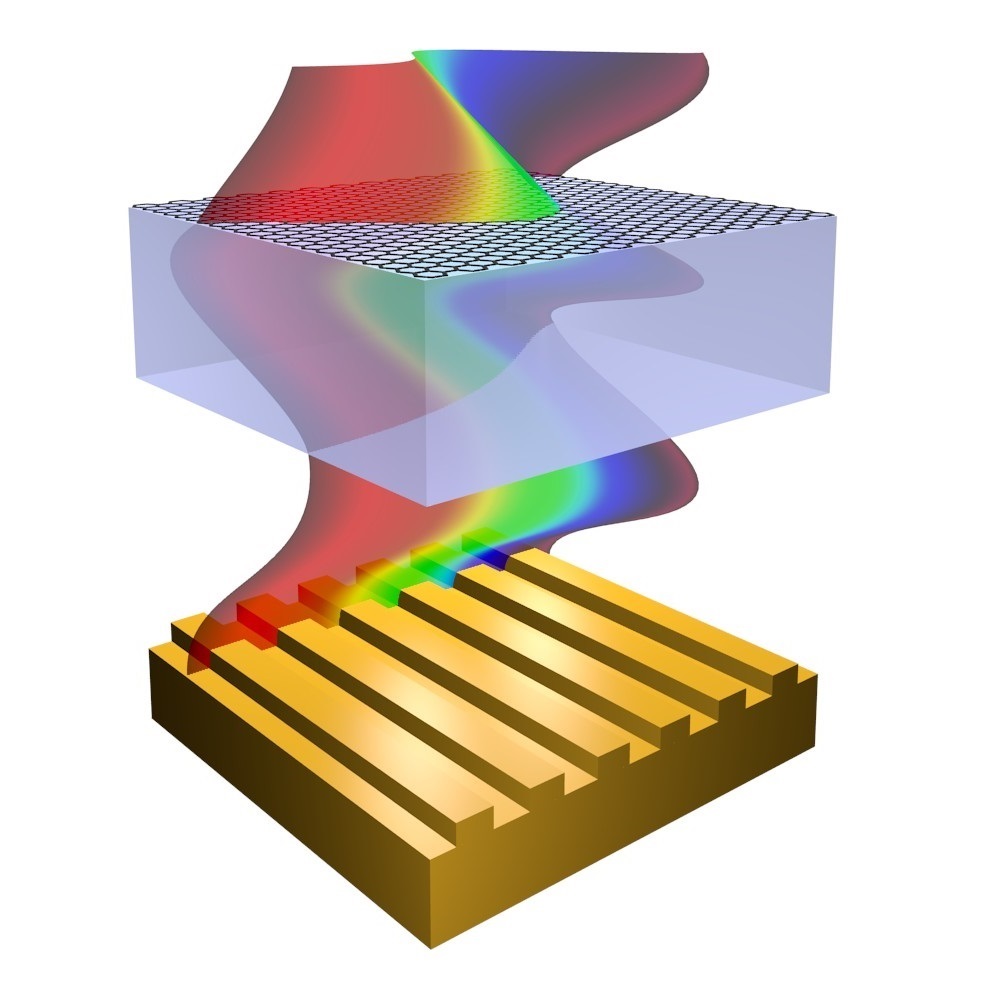22 November 2016
Scientists at The University of Manchester have discovered a new method of creating optoelectronic circuits using graphene and other 2D materials that are much smaller than their current counterparts.
Optoelectronics, the technology that uses pulses of light rather than traditional electrical signals, is vital for telecommunication networks.
Modulators are important in optoelectronic circuits as they control the signals passed through optoelectronic devices. Previous attempts to create hybrid modulators incorporating graphene have yielded promising although limited results.
Writing in Nature Communications, researchers led by Professor Sasha Grigorenko have shown it is possible to combine graphene, its sister material boron nitride and a nanoscale gold grating to create a new class of optical modulator.
Graphene is the world’s first two-dimensional material, just one atom thick yet 200 times stronger than steel, more conductive than copper and impermeable to water.
This could pave the way for faster circuits, which is the main selling point of using light instead of electrical signals. But probably the bigger result from this work is that it could allow for a dramatic reduction in the size of these circuits. It is rare to have a modulator which both creates a strong modulation effect and is really tiny. Philip Thomas, Graphene NOWNANO PhD Student
Since then a whole family of 2D materials have been uncovered and are now being used together in order to tailor materials to meet specific requirements.
The proposed device can effectively process information using light much the same way as computers process information using electrons.
Graphene NOWNANO PhD student Philip Thomas, who led the experimental work, said: “This could pave the way for faster circuits, which is the main selling point of using light instead of electrical signals. But probably the bigger result from this work is that it could allow for a dramatic reduction in the size of these circuits. It is rare to have a modulator which both creates a strong modulation effect and is really tiny.”
Professor Sasha Grigorenko said: “It is unprecedented to achieve light modulation in such a wide wavelength range - from visible to infrared light in which human eye, night vision goggles and thermal imaging operate - using just one simple design.”















